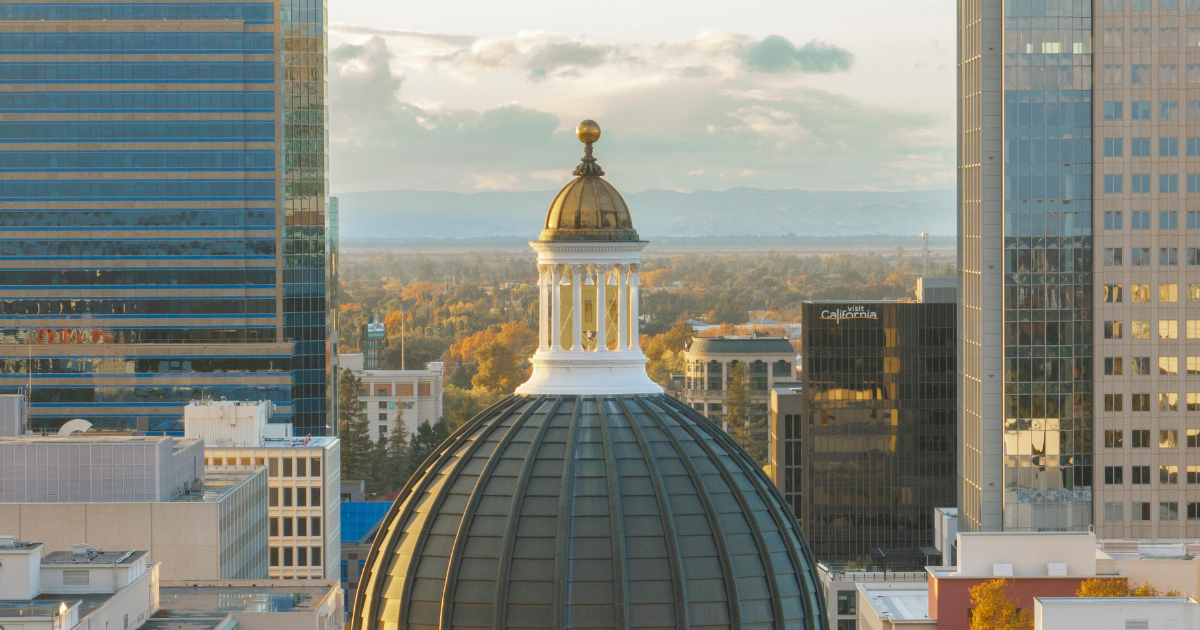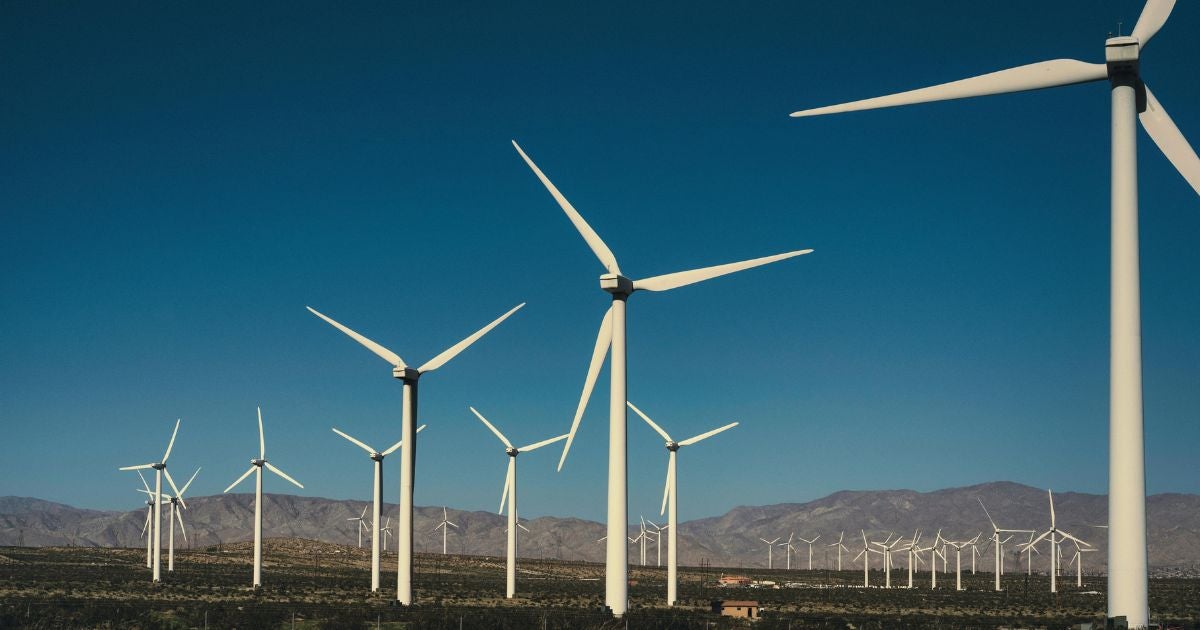Results were released today for California’s second cap-and-trade auction of the year, and the first auction since Governor Newsom proposed extending California’s cap-and-trade program through 2045 as part of his May budget proposal. As California lawmakers consider the future of the cap-and-trade program, they face a pivotal opportunity to deliver real and lasting benefits to communities across the state. At stake is not only California’s continued leadership on climate, but also the potential to unlock major economic and affordability gains for Californians.
Climate 411
Despite lower revenue due to program uncertainty, a stronger, long-term Cap and Trade promises to strengthen investments in California
As the California legislature looks to reauthorize cap-and-trade, they cannot forget the strongest climate safeguard the state has: the cap itself
In the face of federal attacks on U.S. climate progress, Governor Newsom recently announced that California was “doubling down on cap-and-trade: one of our most effective tools to cut emissions and create good-paying jobs.” And at the heart of that program is the emissions cap: the firm, declining limit on climate pollution that drives progress on emissions reductions across the state.
With the cap-and-trade program up for reauthorization this year and the California Air Resources Board (CARB) evaluating important program updates, now is a crucial moment to revisit what matters most: the cap.
What is the cap and why does it matter?
The cap is the foundation of California’s cap-and-trade program. It sets a binding, declining limit on greenhouse gas emissions from the state’s largest polluters, covering roughly 75% of statewide climate pollution. Each year, California issues a declining number of emissions allowances — each one representing one ton of carbon pollution — and the amount issued is limited to the total allowed under the state’s emissions cap. The allowances are either auctioned at quarterly auctions, or distributed to regulated entities to benefit ratepayers and insulate them from price impacts. Because the total number of allowances declines each year, overall emissions must also fall. The cap is what gives the cap-and-trade program its climate power. The built-in trajectory that the cap represents ensures steady, predictable progress toward California’s climate goals — as long as the cap is properly calibrated to achieve those goals.
California’s emissions cap is designed to help achieve both near- and long-term climate targets. Under the state’s 2022 Scoping Plan, California is aiming to cut emissions 48% below 1990 levels by 2030, and at least 85% below 1990 levels by 2045. Hitting those targets requires consistent and meaningful progress. The design of the cap, and especially how quickly it declines, plays a key role in determining how much pollution is avoided in this critical decade. These cumulative emissions are incredibly important: every ton of pollution we avoid emitting today reduces the long-term buildup of pollution in the atmosphere, limiting warming and the damage of future climate impacts.
Cap-and-trade is part of a broad suite of climate policies in California, including clean air standards, electrification efforts, and clean fuels. But while most policies are designed to incentivize reductions or reduce emissions from specific sectors or sources, the cap ensures that economy-wide emissions stay within the limit of the cap. That makes the cap a critical ‘insurance policy’ — even if other programs don’t deliver the level of emissions reductions they expected, the cap guarantees an upper bound on pollution.
How can the cap be strengthened?
Lawmakers have the opportunity this year to reaffirm their commitment to ambitious, effective climate action by extending the cap-and-trade program. The cap is what guarantees that emissions go down, and reauthorization should reinforce that core principle.
At the same time, CARB is evaluating near-term changes to the program through a rulemaking process. One of the most important choices on the table is how the cap will be structured until 2030. Encouragingly, CARB is considering options that would properly align the cap with emission reductions the 2022 Scoping Plan says are necessary. With reauthorization, lawmakers can ensure that this cornerstone program can keep delivering emissions reductions for Californians while generating billions of dollars in investments for climate resilience, environmental justice priorities and to help address affordability. Also, with the current rulemaking, CARB has the chance to make sure that these reductions are swift enough to avoid the worst impacts of climate change.
These are both necessary and crucial steps — strengthening the cap through long-term reauthorization and the rulemaking will keep California on track for near-term climate success, and create a model for other states to follow. Because — when it comes to California’s climate future — it’s about the cap.
An Executive Order is attempting to interfere with ironclad state authority to protect people from pollution
States have broad and bedrock authority to protect people from pollution – and President Trump’s Executive Order issued yesterday instructing the Attorney General of the United States to interfere with foundational state prerogatives to protect people from harm cannot change that.
The Executive Order was one of four the President signed yesterday. It is revealing that this order attacking state action came in tandem with another Executive Order that showcased his efforts, certain to fail, to force the American people to use expensive and high-polluting coal. That coal order would make President Trump squarely responsible for imposing a massive tax on the American people in the form of higher energy prices, as it is well established that coal power is costly before even factoring in its roles in contributing to deadly soot and smog and in fueling the deadly fires, heat waves, and storms caused by climate change.
Delay and uncertainty around California’s core pollution-cutting program is costing the state millions
Results were released today for California’s first cap-and-trade auction of 2025. Prices decreased from the November 2024 auction, reflecting continued uncertainty among market participants due to the lack of regulatory and legislative clarity. This uncertainty is costing California hundreds of millions of dollars in lost revenue for climate and environmental justice programs at a time when the state needs it most.
February auction results
- All 51,466,028 current vintage allowances — emission allowances valid for compliance this year – offered for sale were purchased, resulting in the 18th consecutive sold out auction. This is 1,163,584 fewer allowances than were offered at the previous auction, as the number of offered allowances declines annually.
- The current auction settled at a price of $29.27, $3.40 above the $25.87 price floor and $2.64 below the November 2024 settlement price of $31.91. Today’s settlement price follows a trend of lower settlement prices, similar to the prices seen in the February, May, and November auctions, which settled at $41.76, $37.02, and $31.91, respectively. The last time auction prices dipped below $30 was in February of 2023.
- All of the 6,847,750 future vintage allowances offered for sale were purchased. These allowances can be used for compliance beginning in 2028. This is 363,250 fewer future vintage allowances than were offered at the previous advance auction.
- Future vintage allowances settled at $28.00, $2.13 above the $25.87 price floor and $2.16 below the November settlement price of $30.16.
- This auction is expected to generate roughly $851 million for the Greenhouse Gas Reduction Fund. This is a notable drop from the peak revenue a year ago, when the February 2024 auction generated over $1.3 billion.
What these results mean
First, it is important to understand that the market is functioning as designed. Despite fluctuating prices, the emissions cap remains intact and covered entities must comply with the program’s requirements. However, continued uncertainty surrounding the California Air Resources Board (CARB)’s rulemaking process and the state legislature’s timeline on program reauthorization are introducing unnecessary volatility and costing California critical revenue for climate and community investments.
Delays and uncertainty have a cost
This latest auction demonstrates the financial consequences of policy uncertainty. With CARB yet to finalize key decisions on pre-2030 allowance budgets and allocation, market participants lack the clarity needed to plan compliance strategies and make long-term investments in emissions reductions. The result? Auction prices that are lower than they might otherwise be, meaning California is leaving huge amounts of revenue on the table — funds that could have been used to invest in clean energy, wildfire prevention, and air quality improvements.
This month’s report from the Legislative Analyst’s Office highlights that the state may need to revise its Greenhouse Gas Reduction Fund expenditure plan if prices continue to trend lower than forecasted, potentially impacting both the 2024-25 and the 2025-26 budgets. Much of the revenue raised through these quarterly auctions is already committed to be spent on important programs statewide and the loss of revenue due to uncertainty could have very real impacts.
The lack of clarity also dampens the incentives for businesses to invest in emissions reductions; investments that often happen over years. If companies aren’t sure what the cap-and-trade market will look like in the next decade, they’re less likely to take proactive steps to decarbonize. Similarly, investors in clean energy and climate technology need confidence in long-term market stability to support new projects.
The good news: this is fixable
California has an opportunity to strengthen market confidence and ensure the cap-and-trade program continues driving ambitious emissions reductions while raising urgently needed funding for climate resilience and community investments. That starts with swift action on two fronts:
- CARB must finalize and implement its rulemaking to ensure the cap-and-trade program is on track to deliver the necessary reductions by 2030. This will provide clear market signals for investors, allow covered entities to plan their compliance strategies, and prevent further unnecessary volatility. CARB should release the Initial Statement of Reasons as soon as possible so that changes can go into effect in the 2026 allowance budget year.
- The Legislature must act this year to reauthorize the program at least through 2045. This will enable long-term investments and planning in emissions abatement, provide clarity about potential program reforms to increase climate ambition and equity outcomes, and send a strong message that cap-and-trade will remain a cornerstone of California’s strategy to meet its 2045 carbon neutrality goal.
Market fluctuations like those seen in this auction are a symptom of uncertainty. By committing to ambitious climate action through regulatory and legislative pathways, and reinforcing the essential role of cap-and-trade in delivering emission reductions, California can protect its climate leadership and generate the revenue needed for critical investments.
California is on the path to a regional electricity market
This is the first in a blog series on the opportunities presented by the Pathways Initiative, focused on California. Check back for additional publications in the series coming soon.
California has taken a critical first step towards creating a cheaper, cleaner and stronger grid through the creation of a Western regional electricity market. By working more with its neighbors, California can unlock new clean energy technologies across the West, including offshore wind, long duration energy storage and other clean options that can take a long time to build. This type of cooperation will be essential to keep costs low as California both cleans up its existing electric grid to cleaner options and triple its size to help decarbonize the rest of the economy.
As the U.S. braces for environmental attacks, it’s up to states to lead on climate
With anticipated environmental rollbacks at the federal level, the U.S. needs states to act on climate in order to make progress towards the nation’s 2030 commitments. Luckily, there are already signs of momentum. A landslide victory in Washington state to protect its climate law sends a hopeful message that ambitious climate action at the state level is not only possible — it’s popular. This result in Washington should give state leaders across the country confidence to move forward with bold action at a moment when it’s needed the most. Here’s what to know about the power of state-level action and a few highlights to watch out for in 2025.














